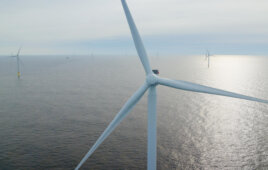Touted as one of the most successful items of the 2009 American Recovery and Reinvestment Act, we see the “end of the tunnel” for the Section 1603 Grant in Lieu of Investment Tax Credit (ITC) Program. Projects must start construction before January 1, 2012. This date was extended once, but is unlikely to be pushed back again. The Section 1603 Cash Grant has proven to be “King” in the United States renewable project finance arena.
Alternatively, many commissioned and under-development wind projects utilize the production tax credit (PTC), rather than the Section 1603 Grant, to increase rates of return and/or be more competitive in pursuit for power purchase agreement contracts. However, the PTC “credit termination date” is slated for January 1, 2013. What might the void of these incentives mean to renewable energy and wind projects going forward?
Background
The Section 1603 Grant in Lieu of ITC provides qualified renewable energy projects with a cash grant equal to either 30% or 10% of eligible basis depending on property type. Wind projects could obtain 30%. Eligible basis is defined as tangible personal property and certain structural components of a building deemed integral to the production of renewable electricity. These wind projects must have been placed in service in 2009, 2010, or 2011, or at least have been started by December 31, 2011 and completed by future “credit termination date” deadlines. In the case of large wind (currently greater than 100 kW), projects must be commissioned prior to the PTC credit termination date of January 1, 2013.
Both the PTC and the Section 1603 cash grant program have encouraged investments in wind, solar, and other non-traditional renewable energy projects since its enactment. The latest U.S. Treasury estimates indicate that nearly 20,000 grants have been awarded with total funding in excess of $9 billion. These grant payments have greatly aided development in the renewable energy sector. For example, as reported by AWEA, the U.S. wind industry grew by 35% over the past four years, second only to natural gas and more than nuclear and coal combined.
Proposed solutions
AWEA recently coordinated a tele-town hall meeting campaign. This organized lobbying effort aims to extend the sunset date of the PTC to continue bolstering large-wind project development. In addition, on October 20, 2011 legislation was introduced to expand the small-wind investment tax credit to projects with capacity up to 20 MW. This legislation would enable wind projects that meet the December 31, 2011 start-of-construction Section 1603 safe harbor provision to be commissioned prior to January 1, 2017 and still qualify for the grant.
Future considerations
With the uncertainty of what federal energy incentives may be available to wind projects in the future, many developers are looking toward creative structures including the introduction of:
• Other Financing Incentives: Depending on possible extension of Federal New Markets Tax Credits, certain renewable energy projects, with prequalified location and economic benefits, may seek competitive NMTC funds which could result in about 20% project capital. In addition, some states and counties provide such benefits as property tax abatement for specific project
• OEM Relationships: Partnerships or shared ownership structure may offset certain project costs
• Tax Equity Investors: Finding the appropriate investor with tax appetite is possible, but can be challenging in these economic times
• Power Offtake Creativity: PPA pre-payment structures, lower priced PPA’s in exchange for longer terms (i.e. 20+ years)
Federal incentives have worked well in developing wind as the nation’s largest renewable energy source. It will take creative financial structure to continue such developments.
By: Rich Frohmader and Sam Blahnik of Baker Tilly Virchow Krause, LLP
Pursuant to the rules of professional conduct set forth in Circular 230, as promulgated by the United States Department of the Treasury, nothing contained in this communication was intended or written to be used by any taxpayer for the purpose of avoiding penalties that may be imposed on the taxpayer by the Internal Revenue Service, and it cannot be used by any taxpayer for such purpose. No one, without our express prior written permission, may use or refer to any tax advice in this communication in promoting, marketing, or recommending a partnership or other entity, investment plan or arrangement to any other party.
Filed Under: Policy, Projects






